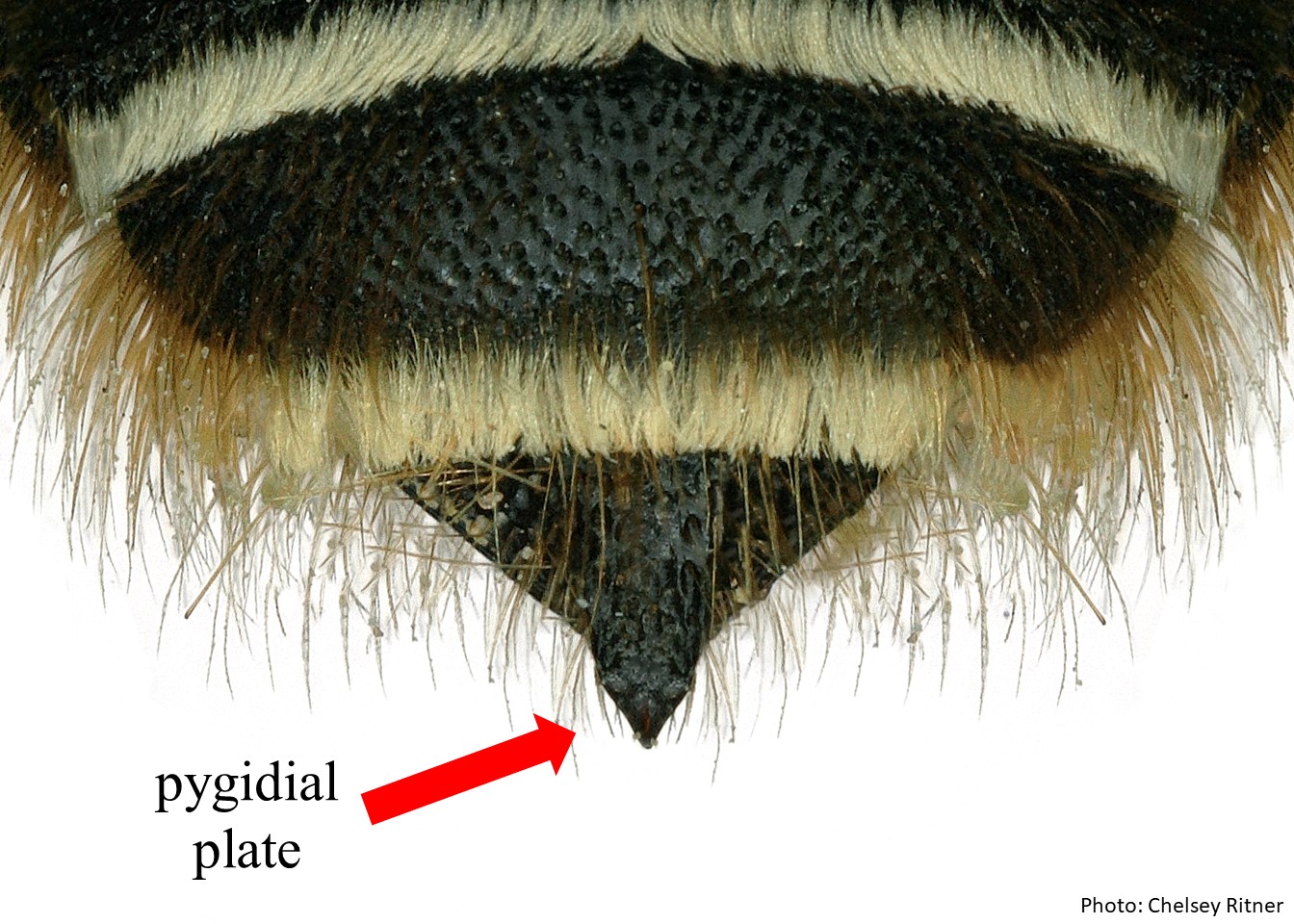Xylocopa (Maaiana) are small bees, 10 – 15 mm in length, with dark brown to black integumentintegument:
a tough, protective outer layer
. They have thick, brown to dark yellow pubescencepubescence:
short, fine hair
on the thorax and the first and last few segments of the abdomen but appear to lack pubescencepubescence:
short, fine hair
elsewhere. The wings have a light brown color and a weak violet iridescent color (Krombein et al. 1976Krombein et al. 1976:
Krombein, K.V., P. B. Karunaratne, S. Karunaratne. 1976. Xylocopa ( Maaiana ) bentoni Cockerell. Smithsonian Specimen Inventory (USNMENT01606506).).
Xylocopa (Maaiana) includes 5 species (Minckley 1998Minckley 1998:
Minckley, R. L. 1998. A Cladistic Analysis and Classification of the Subgenera and Genera of the Large Carpenter Bees, Tribe Xylocopini (Hymenoptera: Apidae). Natural History Museum, The University of Kansas 9: 1-47.).
Xylocopa (Maaiana) are known from Sri Lanka and India (Michener 2007Michener 2007:
Michener, C.D. 2007. The Bees of the World (2nd ed.). Johns Hopkins University Press, Baltimore and London, 953 pp.).
<a data-cke-saved-href="https://www.discoverlife.org/mp/20m?w=1200&kind=Xylocopa+angulosa,Xylocopa+bentoni,Xylocopa+bicristata,Xylocopa+punctigena,Xylocopa+punctilabris" href="https://www.discoverlife.org/mp/20m?w=1200&kind=Xylocopa+angulosa,Xylocopa+bentoni,Xylocopa+bicristata,Xylocopa+punctigena,Xylocopa+punctilabris" _blank"="">
Distribution map generated by Discover Life -- click on map for details, credits, and terms of use.
Most members of the genus Xylocopa are generalist pollinators, meaning that they will pollinate almost any flower that they can fit into. Carpenter bees may also engage in nectar robbing, a behavior in which a hole is bored into the base of a flower to get access to its nectar (Keasar 2010Keasar 2010:
Keasar, T. 2010. Large Carpenter Bees as Agricultural Pollinators. Psyche doi:10.1155/2010/927463.).
(modified from Michener 2007Michener 2007:
Michener, C.D. 2007. The Bees of the World (2nd ed.). Johns Hopkins University Press, Baltimore and London, 953 pp.)
 with emarginateemarginate:
with emarginateemarginate: with subapicalsubapical:
with subapicalsubapical:Xylocopa (Maaiana) is very similar to X. (Nodula), which it was previously included under. They can be distinguished by the shape of the scutellumscutellum:
shield shaped plate behind scutum, which is narrowly rounded or subangulatesubangulate:
Almost angulate; having a suggestion of corners or angles
in profile and not overhanging the metanotummetanotum:
the posterior dorsal segment of the thorax, behind the scutellum
(Hurd and Moure 1963Hurd and Moure 1963:
Hurd, P.D. and J.S. Moure. 1963. A Classification of the Large Carpenter Bees (Xylocopine) (Hymenoptera: Apoidea). University of California Publications in Entomology (Vol. 29). Berkeley and Los Angeles: University of California Press, 365 pp.).
Under their previous designation, subgenus Nodula, members of Xylocopa (Maaiana) were recorded nesting in dry rhododendron branches that were approximately 2-5 cm thick (Hurd and Moure 1963Hurd and Moure 1963:
Hurd, P.D. and J.S. Moure. 1963. A Classification of the Large Carpenter Bees (Xylocopine) (Hymenoptera: Apoidea). University of California Publications in Entomology (Vol. 29). Berkeley and Los Angeles: University of California Press, 365 pp.).
There are no known invasives.
Hurd, P.D. and J.S. Moure. 1963. A Classification of the Large Carpenter Bees (Xylocopine) (Hymenoptera: Apoidea). University of California Publications in Entomology (Vol. 29). Berkeley and Los Angeles: University of California Press, 365 pp.
Keasar, T. 2010. Large Carpenter Bees as Agricultural Pollinators. Psyche doi:10.1155/2010/927463.
Krombein, K.V., P. B. Karunaratne, S. Karunaratne. 1976. Xylocopa (Maaiana) bentoni Cockerell. Smithsonian Specimen Inventory (USNMENT01606506).
Michener, C.D. 2007. The Bees of the World (2nd ed.). Johns Hopkins University Press, Baltimore and London, 953 pp.
Minckley, R. L. 1998. A Cladistic Analysis and Classification of the Subgenera and Genera of the Large Carpenter Bees, Tribe Xylocopini (Hymenoptera: Apidae). Natural History Museum, The University of Kansas 9: 1-47.